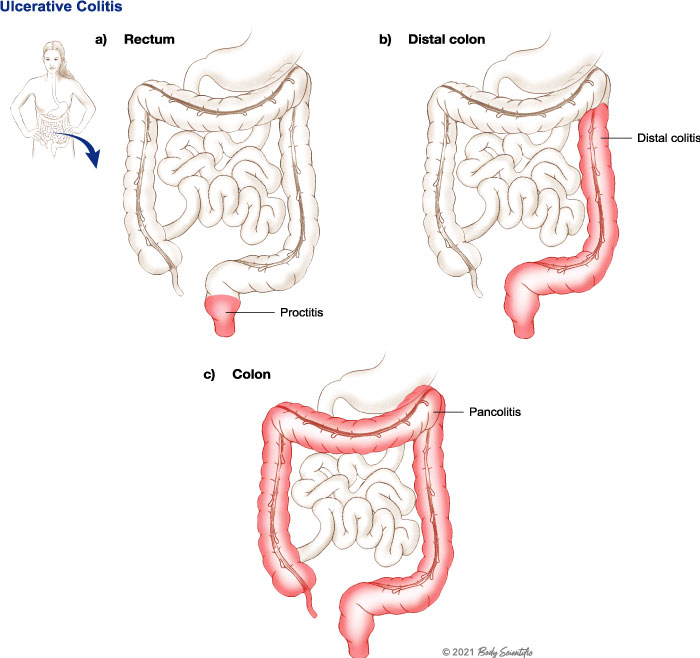Ulcerative colitis is chronic inflammation that generally affects the large intestine (colon) and rectum. Compared to Crohn’s disease, in ulcerative colitis (UC), the inflammation may be located more often on the surface of the colon or rectum and does not penetrate the bowel walls.
Ulcerative colitis may present in the following ways:
It can present only in the rectum as proctitis.
It can also present as distal colitis, which starts at the rectum and extends up to the left colon, meaning the sigmoid colon and descending colon, (sigmoid colon and descending colon).
It can also present as pancolitis, which involves inflammation of the entire colon and rectum.




